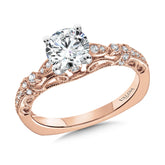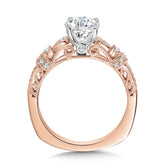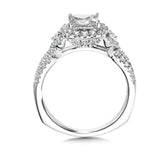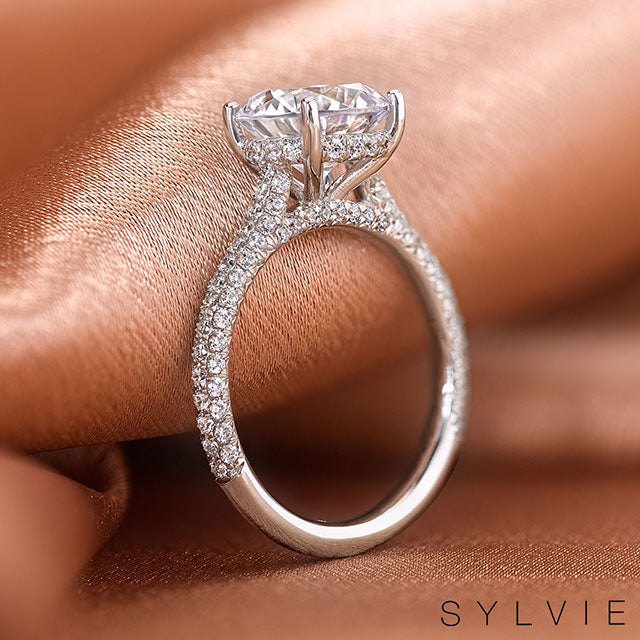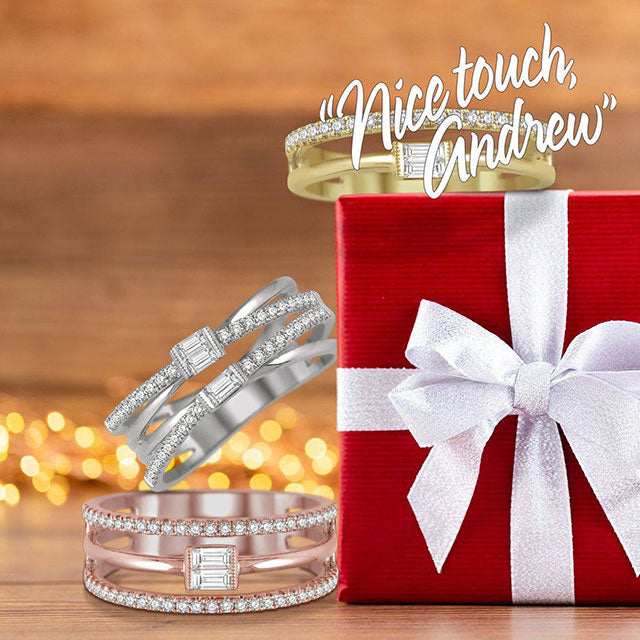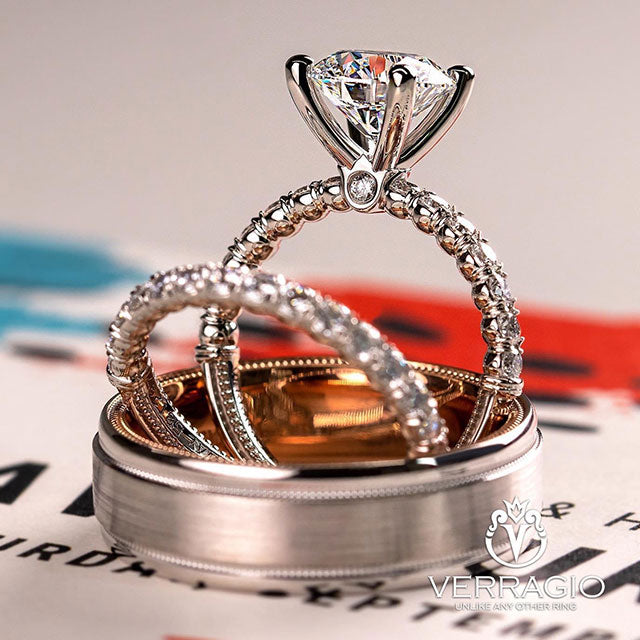Diamond Proportions
There are many factors that affect the light performance of a diamond, however the stone's proportions are the largest factor in creating the roadway for the light to travel. The proportions of a diamond are measurements that include the depth or height, length and width, the table size and pavilion height.

Jewelry Designer at Andrews Jewelers
Engineering the Cut
Diamond cutters examine the rough (an uncut diamond) to determine what shape will retain the most diamond material without waste. Once the shape is determined the cutter will masterfully cut the dimensions of the diamond including the height, length and width. With recent advances in computer-aided design, cutters can create very precise models of how the diamond will look before placing the first facet on the diamond. This helps the cutter decide what the dimensions of the diamond should be in order to create the most brilliance.
What is Polish & Symmetry?
Consumers often overlook the importance of the polish and symmetry and how it affects the quality of the cut grade and the diamond's brilliance. The polish grade provides information about how well the diamond's surface has been created during the cutting process. If a diamond has a poor polish grade you may see polishing lines on the surface of the stone or small pitting. This can be compared to the surface polish of poorly made furniture, when wood is not sanded well you'll see grinding or sanding marks in the wood's surface. In contrast, high quality furniture has a glossy and brilliant finish that can sometimes cast your reflection. A diamond with a high polish grade glimmers more while one with a lower grade will be duller looking.
Symmetry determines how accurately the facets are aligned to one another as well as how balanced the stone is. A diamond with a poor symmetry grade may not properly reflect light and therefore will be less brilliant than a diamond with a higher symmetry grade. To make it more simple to understand, think about making paper snowflakes when you were a child. First, you would fold the paper in half and then you would cut a pattern in one side of the snowflake. If the paper was perfectly folded in half your snowflake had a much sharper shape and true snowflake pattern. In theory, if you could fold a diamond in half all the facets on the left side should look exactly like all the facets on the right side. When this occurs your diamond will be more brilliant than a stone that is not as balanced.
POLISH AND SYMMETRY GRADING
These grades can be found on the details sections of the certifications from GIA, AGS, and EGL grading laboratories. When considering a diamond's overall cut you must take in account the proportions, polish, and symmetry. This can be somewhat confusing so Andrews Jewelers has created a system to classify a diamond's overall cut and brilliance using information from the proportions, polish, and symmetry. This mathematical system was devised using the years of hands on experience that Andy Moquin (Andrews Jewelers's founder) has gained buying and selling over $20,000,000 in diamonds for use in diamond engagement rings and diamond jewelry.
ANDREWS JEWELERS' DIAMOND CUT GRADES

Jewelry Designer at Andrews Jewelers
What Cut Grade to Choose?
- If you are a discriminating buyer and can really appreciate the finer things in life then we would suggest that you purchase a AAA diamond. These diamonds are cut to the absolute highest quality standards for proportions, polish, and symmetry. This will assure you the most brilliant diamond your money can buy.
- For the best combination of brilliance and price so that you won't break the bank. We suggest that you consider looking at diamonds with an ideal cut, very good cut, or good cut.
- If you are looking for the biggest carat diamond you can buy without being terribly concerned about quality, then we suggest that you select a diamond with a fair cut grade.
- Choosing a selection results in a full page refresh.

